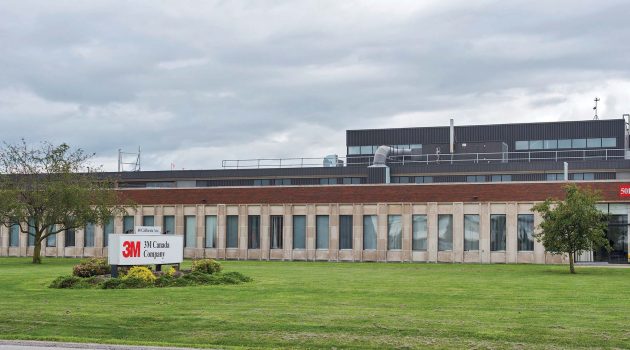
Save the planet: Build an effective energy management plan
By Andrew Hejnar
Industry Operations Sustainability Manufacturing 3M energy management environment manufacturing SustainabilityIt’s good for business, the environment and the community.

3M in Brockville, Ont. where one energy management project saved $350,000 a year.
PHOTO: 3M
Many manufacturers understand the value of adopting programs and policies to conserve energy, protect the environment and act in a socially responsible way. They realize a robust sustainability strategy is essential to business success, a key driver of new business and an increasingly important influencer of purchasing decisions. It’s also something that many highly talented people look at when choosing where to work.
So how do you reduce energy consumption, help the environment and save money? It comes down to three things: establish your goals, set out a policy, then develop and execute a clear strategic plan.
Start by setting sustainability goals. Determine what you want to achieve, make sure these goals are specific and measurable, and tie them to a set timeline. 3M goals are to improve energy efficiency indexed to net sales by 30%, increase renewable energy to 25% of total electricity use, and ensure greenhouse gas (GHG) emissions are at least 50% below a 2002 baseline by 2025. This, while growing the business, and helping customers reduce GHGs by 250 million tons of CO2 by using 3M products.
The next step is establishing an energy policy. This should come from the most senior ranks and apply to all operations, clearly stating the company’s commitment and what’s expected of staff. Determine what matters to your organization and state it clearly on one page. You may wish to state your company:
strives to demonstrate good corporate citizenship and sound fiscal management through the reduction of energy use;
aims to appeal to employees – current and potential – who want to work for a sustainable corporation; and
is aligned with customers who prefer, or are mandated to work with suppliers that have a commitment to energy reduction.
Mapping out a strategy for implementation follows goals and policy. 3M plans around three key pillars: metering, technology and people.
Metering is crucial because you can’t control what you can’t measure. It provides real-time information, so personnel see what’s being used and where. It also provides consumption reporting for tracking use and budgeting. Tracking helps to ensure demand for electricity is kept lower during peak hours by your hydro utility company. Budgeting allows you to determine how much natural gas you’ll need, rather than over- or under-buying.
There are many ways to improve the technology you use to make plants more energy efficient. For instance, switching to LED lighting saves between 60% and 90% of energy use. An added advantage is better quality illumination.
Compressed air optimization is another consideration. Despite being a heavy energy consumer – 7 hp of electricity is used to produce 1 hp of compressed air – it’s often used unnecessarily, for such tasks as cleaning workbenches. Instead, use electric blowers and mixers. Also put a preventive program in place to reduce air leaks because most plants waste 20% to 30% of their air.
Identify savings
HVAC is another great source of savings. Air conditioning is very expensive – on average $5 per cfm per year – so conduct air balance studies to reduce exhaust and make up air. Look to re-commission existing equipment or use evaporative cooling.
The most important pillar of an energy conservation strategy is people. In fact, everyone – including the most senior managers to production workers, sales representatives and front-line customer service agents – should be inspired to embrace sustainability and energy conservation. Awareness campaigns and regular training, combined with an employee suggestion program and other regular communications, go a long way to helping everyone understand how much they matter to the energy reduction strategy.
3M delivers training on a two-year cycle to all employees. A quarterly newsletter with its fun energy-awareness comic strip, helps maintain the focus.
Also consider implementing the ISO 50001 Energy Management System. This voluntary international standard framework is based on a “Plan-Do-Check-Act” continuous improvement cycle. It leads to improved energy performance and integrates efficiency into management processes.
Successful development of goals, policy and strategy requires senior management commitment, expert consultant support and rigorous tracking, but it’s worth the effort.
At 3M’s Brockville, Ont. tape facility, energy use between the plant’s busiest production day and non-operating day was compared. On the non-operating day the plant was using 40% of the energy consumed during its busiest operation. By making changes to how and when equipment ran, consumption was reduced to 6% without any capital expense, for annual savings of more than $350,000.
But it’s not just costs and savings that matter. A well-developed and executed energy management plan also protects the environment. It’s about doing well by doing good.
Andrew Hejnar is the energy manager at 3M Canada, in Brockville, Ont. Visit www.3mcanada.ca.
This article originally appeared in the October 2018 print issue of PLANT Magazine.
